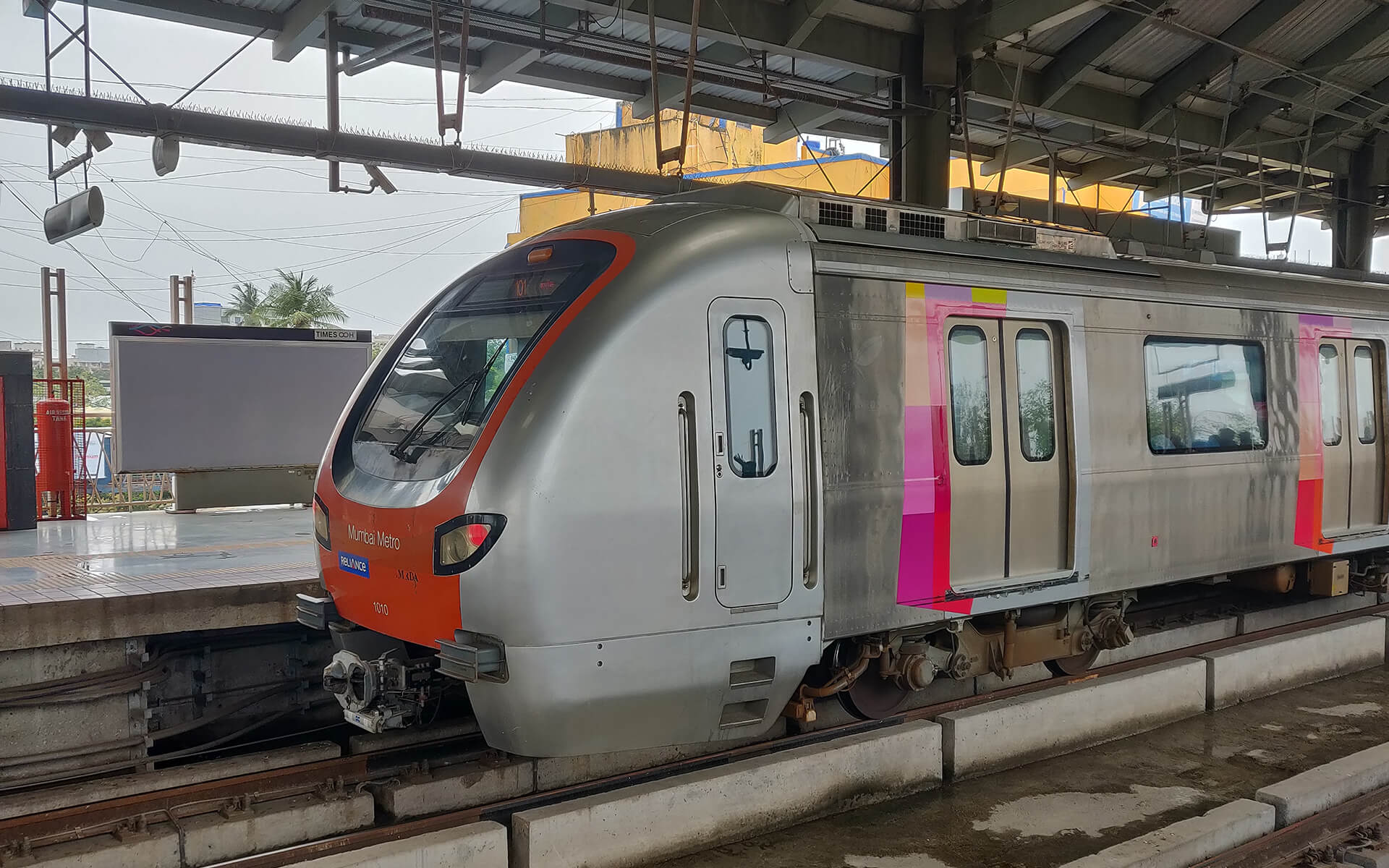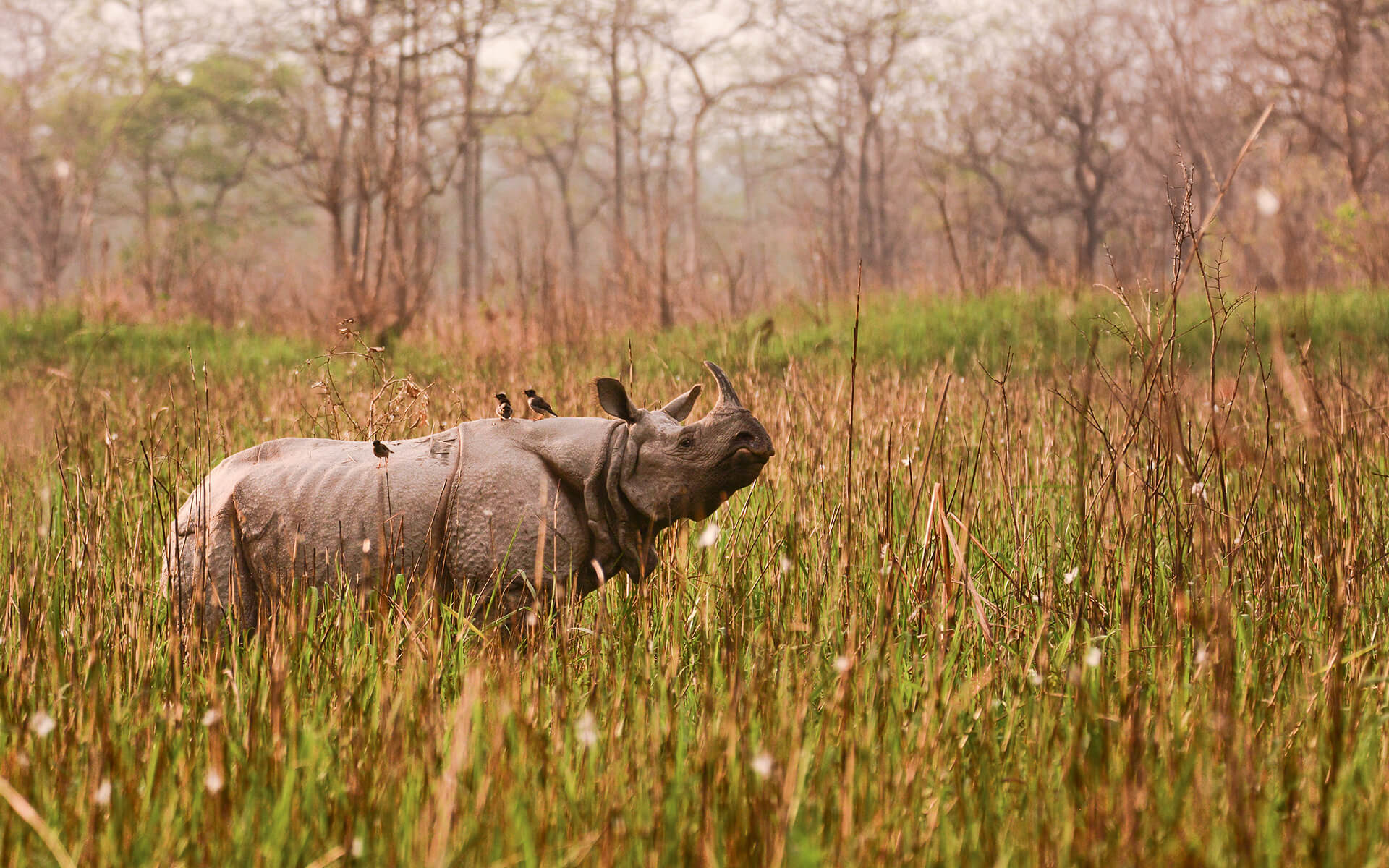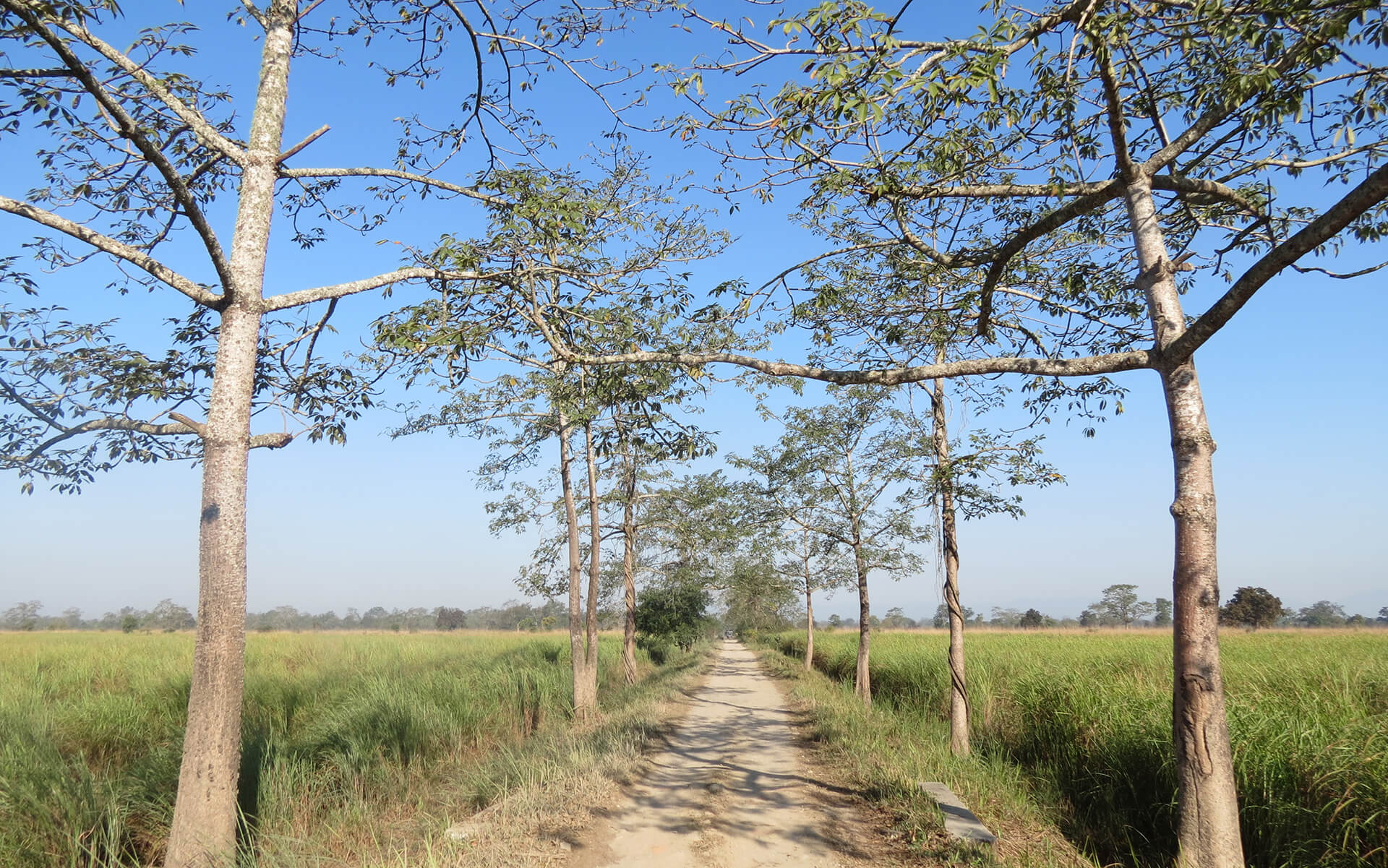Planning for Climate Action in Indian Cities
An interview with Member of Parliament Gaurav Gogoi about the challenges of balancing people, biodiversity and development needs, and the important role of governance and policy-makers in the path forward for India.
What do you see as the evolving role of the Government of India since 2010 in terms of protection and conservation of the environment?
The environment is looked upon by the central government at two fundamental levels. One is of permissions and clearances that the Ministry of Environment needs to approve before any large infrastructure project is taken up. I sense there has been a change in the approach of the Government after 2014. Earlier it was much tougher to get environmental clearances and clearances from the wildlife department for large infrastructure projects.
Now, in a bid to focus on the ease of doing business they are limiting the number of permissions and time required for approvals. However, there has not been enough diligence, when it comes to securing environmental clearances or in finding alternative ways where infrastructure projects can be undertaken without causing massive damage to the local ecosystem.
One example is the Mumbai metro project in the state of Maharashtra, where one government had taken the decision to protect the ‘Aarey’ forest from being destroyed, and a subsequent state government is undoing the protection and allowing those forests, which are literally one of the most important green lungs of Mumbai city, to be destroyed so that one of the components of this metro infrastructure project takes off.
Secondly, in terms of preserving the environment, the current policy ecosystem is linked increasingly to energy. The dependence on coal is creating a lot of greenhouse gas emissions thereby spoiling our environment and increasing our carbon emissions. Therefore, the focus seems to be a lot on energy emissions and going from coal to renewable sources, such as solar, hydropower and the emphasis on green hydrogen. While it is good from one perspective that we are modernizing our energy production and moving from non-renewable to renewable sources, it is a limited perspective.

There is tremendous amounts of ecosystem and biodiversity in India that we have to maintain and these ecosystems have increasingly become much more vulnerable because of the over-commercialization that has taken place in the urban areas which are linked in this sensitive ecosystem. An example of that is Joshimath – a religious town in the Himalayan ecosystem – that sees a lot of travelers and hence unplanned construction of hotels, roads, houses and apartments. The government reports from the Indian Space Research Organisation (ISRO) show how this level of unplanned activity has damaged this very important religious town, so much so that there are cracks appearing in homes, and people are being asked to evacuate their homes because of severe risks to their lives, as the town seems to be sinking. We need to think about how to restrict the urbanization of cities, towns and villages, especially those which are linked, and situated in the middle of a sensitive ecosystem.
What are some insights and solutions for the municipal level where they could engage with the center and citizens towards this common aim?
There is a need to upskill communities who are either harvesting fresh vegetables, harvesting raw honey, or making weaves based on the silk available. We can scale our livelihood model, focused on communities living close to nature, close to forests and rivers, enabling them to generate additional income by adding value to their farming or to their forestry-based activities. There are corporates that have done this, such as FabIndia, which works with communities in north-east India and takes their traditional weaves and patterns to global markets, without the need to relocate to a city like Delhi and Kolkata. The government can incentivize more such businesses and start-ups, especially in the textiles and the food processing system. We have to ensure that we have uniform quality, the best standards, the best renumeration that is possible down the supply chain and link the honey that is produced in the State of Assam to the markets in Europe. This must be done in a way where there are incentives for the community, the private sector and the government, to make it self-sustaining.
One way is to look at avenues besides large corporates; think about communities and look at how marketplaces can be developed and entrepreneurs created across the entire supply chain. I think the governments focus on profits of corporates, results in us looking to the big entities private sector to do all the heavy lifting when it comes to creating jobs or creating global supply chains. The second avenue is by putting extremely strict limits on urbanization. For instance, in popular hill stations like Shimla, every summer the roads from Delhi to Shimla are choked with cars, all emitting smoke, and the entire beauty of a pristine Himalayan town is lost.
We have to reduce the burden of the Indian population on Indian ecologically sensitive areas.
Similarly, in my constituency we have a UNESCO Heritage Wildlife Sanctuary called Kaziranga and during peak tourist season close to 1,000-jeep safaris enter every day, causing damage to the ecosystem, where it no longer remains a wildlife safari: it becomes a zoo. Governments, both central and local, have to come up with putting curbs and limits so that we do not expose our ecologically sensitive areas to traffic, or a volume of people beyond their capacity to hold.
How do you impose those limits? For example, Bhutan has very high entry barriers, and high cost of construction or entry permits, which is their model. Or you could have an annual lottery, of permits that allow permits holders to either build a shop, or travel to Shimla or to Shillong in the north-east. We have to look at innovative ways and pilot them across the country to reduce the burden of the Indian population on Indian ecologically sensitive areas.
What is your vision for your State of Assam in achieving a balance between protecting biodiversity and the need for development? What are some of the things you would like to see done in the coming years?
One only has to look at the natural and competitive assets of any state to build that into an ecosystem that creates jobs, generates revenue for people, generates revenue for the state and is sustainable. If you ask anybody who has been to the North-east the foremost thing that comes to their minds when they think about the North-east is a sense of exploring a part of India they have not seen and that they want to wish to understand better. Therefore, I think in the years to come more and more tourists are likely to visit north-east India.
From one aspect it is good as it is going to create jobs, demand for local hotel operators, store operators etc. At the same time, if there are hundreds of cruises down the river Brahmaputra, hundreds of cars entering wildlife sanctuaries, thousands of people walking in, that is not sustainable and in 20-25 years we would lose the entire charm because of over-commercialization.
Therefore, we have to think about a tourism policy that is uniquely north-eastern, which celebrates our sense of adventure. Through small Airbnb properties, by creating marketplaces where information is available, and where we improve the infrastructure, improve public transport and connectivity. We must think, from today onwards about how we put curbs, and restrictions in a way that preserves the ecosystem in the North-east for the next five to ten decades.

Secondly, the north-east is an area where the use of pesticides in our farming is quite limited compared to other parts of India. Hence the kind of horticultural, agricultural products that come from the north-east tend to have a unique taste and are very high in organic component vis a vis other Indian counterparts. So we need to work on scaling that up, to ensure that the cost of switching to natural farming is low, entry barriers are low, there is adequate training and there is remediative prices and market linkages.
Thirdly, there are challenges with physical connectivity in the north-east. Therefore, in a digital era how we create marketplaces and market linkages remains extremely important. The North-east is one of the gifts that India has to showcase not only to Indians but to the world. Textiles is another sector which creates jobs and I feel envious when I go to Odisha, Rajasthan or South India and see, how well linked the local weaving communities are to the market. Everybody knows about the Kanjivaram sarees, about the kind of kurtas, the weaving patterns, the ghagras and cholis of Rajasthan and Gujarat, but there are tremendous weaves which are very unique in the north-east as well. We have to both tell the story of the north-east better and we have to think to showcase the story in such a manner that preserves the beauty and the magic of north-east for a long time.
Finally, my fourth wish is that we build and sensitize the bureaucracy in the north-east. They are so important in delivering government welfare programs and have to understand the unique culture, heritage, and value system of the north-east. Indian civil service officers who come from different parts of India have to integrate much better with these communities and come up with unique experiments that are adapted to the north-east.
Capacity-building is a very important aspect when it comes to climate action. What could be channels for this perspective to integrate with existing government mechanisms? Should there be new channels for this to happen?
Capacity-building of officers who are executing these projects at the district level or at the sub-division level, is quite important. The government is a crucial vehicle in the current context of delivering welfare programs and creating infrastructure. Unfortunately, in India today, since private investment in infrastructure is quite low, it is essentially the Government invest in infrastructure projects. However, often due to various delays in getting permissions we lose valuable time and costs are overrun. The Government is using public ex-chequer money to invest in capital expenditure, and therefore I find that we need to build the capacities of the people running these projects.
People who are in the Indian civil service, undergo a three-year training program at the beginning of their careers, which is a very foundational training program. The same officers need to focus on urban planning, or newer forms of taxation, or satellite-based planning. As new tools and technologies emerge, we need an on-going training program which is not only governed at the central level, but also at the state level and district level, with ongoing programs both short- and long-term courses for officers (junior, medium or senior levels), so they are exposed to the most current forms of policy planning.

In the case of air pollution, the national clean air program of the Government of India gave many cities a budget to plan and reduce emissions over seven to eight years. However, due to the limited capacities, these plans were not at all viable, suited to the local context, and therefore the entire initiative seems to be a failure. Many reports have stated that the National Clean Air Programme (NCAP) has failed to take off in many cities across India which are seeing very high levels of pollution. You might have a lot of funds from the center and have great innovative schemes, but if the workforce at the ground level is not up-skilled then those ideas just remain on paper, unfortunately.
What is the advice that you would like to give to youth that are entering the government services or studying to enter the civil services?
One must continue learning. If you see a doctor who is in the medical sector, they keep training themselves on the latest procedures, the latest medical instruments, on the latest illnesses, the latest drugs. That is something I would advise to officers in the Indian civil service or in the State civil services: that they keep finding opportunities to broad base their knowledge, to upgrade their knowledge, to learn new tools and continue to invest in themselves. These are brilliant young minds; they have to carry out a whole lot of responsibilities that both the Government of India and respective state governments entrust them with. While we do see islands of success, and there are some fantastic minds who come up with great initiatives but often the performance of our officers could be a lot better.
